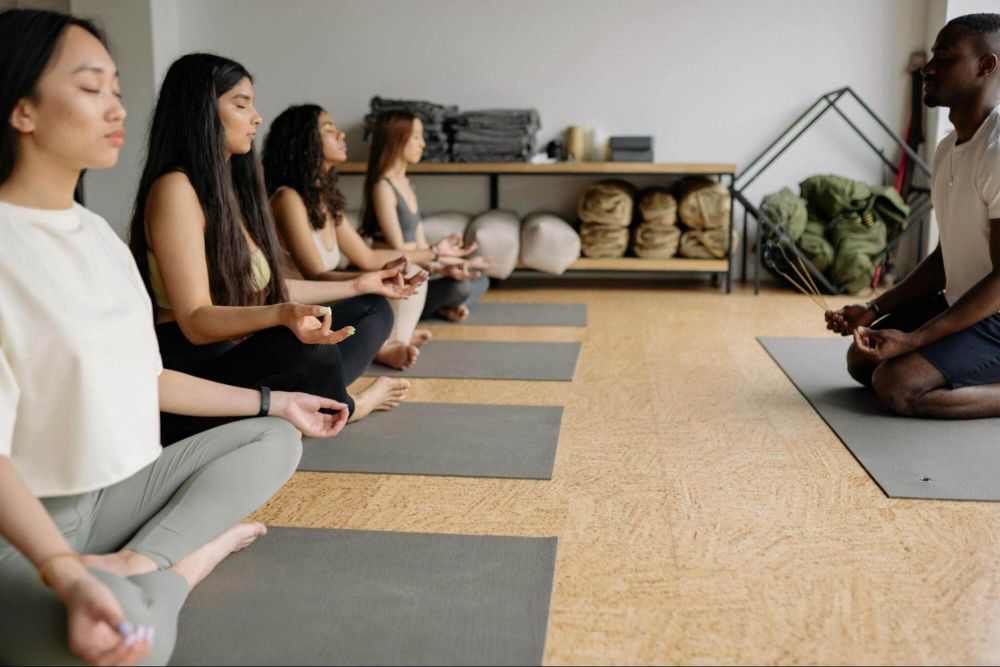A Complete Guide to Becoming a Certified Yoga Instructor
Starting a journey to become a certified yoga instructor opens up a world of personal growth, community connection, and career opportunities. This guide covers everything you need to know—from initial training to building a successful career as a yoga teacher. Here’s how to get started.

Understand Your "Why"
Before diving in, take a moment to explore why you want to become a yoga instructor. Is it a passion for helping others, personal wellness, or a desire for a flexible career path? Knowing your motivation will keep you grounded during the certification process, which requires dedication and time.
Choosing the Right Yoga Style
Yoga isn’t one-size-fits-all; many styles cater to different goals and personalities. Here are some popular ones:
-
Hatha Yoga: A slower-paced practice focused on fundamental postures and breathing techniques.
-
Vinyasa Yoga: Known for its fluid, flowing movements that connect breath with motion.
-
Ashtanga Yoga: A structured and more physically demanding practice.
Each style requires specific training techniques, so decide which fits your interest and teaching goals.
Finding a Certified Yoga School
Look for a school registered with Yoga Alliance, the standard for yoga certification worldwide. Yoga Alliance offers 200-hour and 500-hour training programs, with 200 hours as the entry-level certification. Check for a program with experienced teachers, a balanced curriculum, and positive reviews from past students.
The 200-Hour Yoga Teacher Training Program
The 200-hour program is the most common starting point. This course covers essential skills and knowledge, such as:
-
Anatomy and Physiology: Understand human anatomy to guide safe and effective poses.
-
Teaching Methodology: Learn how to structure classes, assist students, and use modifications.
-
Yoga Philosophy: Delve into the history and principles of yoga, grounding your practice with ancient wisdom.
A well-rounded 200-hour program blends classroom instruction with hands-on experience, preparing you to guide students confidently.
Practice and Build Experience
Practice is key to becoming a skilled yoga instructor. Attend yoga classes regularly, try different styles, and observe other teachers. Apply what you learn in your program to improve your technique, knowledge, and confidence. Practicing on your own and with peers will also help build your teaching style.
Registering with Yoga Alliance
Upon completing your training, you’ll be eligible to register with Yoga Alliance as a Registered Yoga Teacher (RYT). This credential is respected in the industry and can increase your credibility with studios, clients, and employers. To maintain your certification, Yoga Alliance may require ongoing education or additional hours of teaching practice.
Setting Up Your Yoga Career
Your journey doesn’t end with certification. Here are steps to kickstart your career as a yoga instructor.
Gain Teaching Experience
Offer classes in local studios, gyms, or even host sessions in parks. Some newly certified instructors teach for free or at a reduced rate to build their student base and confidence.
Market Yourself as a Yoga Instructor
Use social media to promote your classes, share yoga tips, and post engaging content. Highlight your unique teaching style and what students can expect from your classes. Online platforms are great for connecting with potential clients and growing a following as a content creator.
Develop Additional Skills
As your career progresses, look for areas to enhance your knowledge. Some instructors add skills like mindfulness, meditation, or even using tech tools like an AI slideshow maker to create visuals for workshops or online courses. This can help attract a wider audience by making your classes more engaging.
Running Your Yoga Classes Smoothly
An excellent yoga class goes beyond guiding students through poses. Here’s how to deliver the best experience.
-
Create a Warm Environment: Make your students feel comfortable and welcome, regardless of their skill level.
-
Use Clear Cues: Use concise language to guide students into poses safely. Visual demonstrations are helpful, and you might even utilize tools like an AI slideshow maker to create visual aids for online classes or workshops.
-
Encourage Mindfulness: Remind students to connect their breath with movement and listen to their bodies.
Exploring Further Training
Once you’ve started teaching, consider deepening your knowledge. The 500-hour yoga teacher training is a common next step for instructors who want to expand their skills. You might also explore specialties like prenatal yoga, restorative yoga, or yoga therapy.
Diversifying Your Teaching: Workshops, Online Courses, and More
Many yoga instructors diversify by offering workshops or online courses. This approach broadens your reach and can turn teaching yoga into a full-time career. Think about what unique skills or insights you bring that could shape a workshop or digital class. Here’s how to get started:
Creating Online Classes
Online classes let you reach students worldwide, even if you’re new to teaching. You don’t need fancy equipment; just start with a camera and an open space. Many teachers leverage platforms like YouTube, Instagram, or yoga-specific sites to share content and grow their audience.
Using Visuals and Technology
Technology can make your classes more engaging. For example, a free AI slideshow maker can help create beautiful visuals for online presentations or class introductions. This tool quickly generates slideshows with a script, background music, and footage that adds depth to your lessons, helping you stand out as a content creator.
Building a Loyal Student Base
Engagement with students is essential to long-term success. Focus on understanding their goals, offering personalized guidance, and maintaining open communication. Consistently connecting with your students, through check-ins or follow-up messages—builds a sense of community and encourages return visits.
Continuing Education and Staying Inspired
Yoga is an ever-evolving practice, with new styles, insights, and methods appearing over time. Stay updated through workshops, courses, and retreats. Many instructors find that participating in yoga festivals or connecting with other teachers keeps their practice fresh and inspiring. Also, remember that teaching yoga is a journey that evolves with time, just like your personal practice.
Conclusion: Your Journey as a Yoga Instructor
Becoming a certified yoga instructor is more than a career choice; it’s a lifestyle that offers personal growth, community building, and endless learning. With dedication, the right training, and a bit of creativity, you can build a rewarding career in yoga that positively impacts others' lives.
Related Blogs
No related blogs found.

